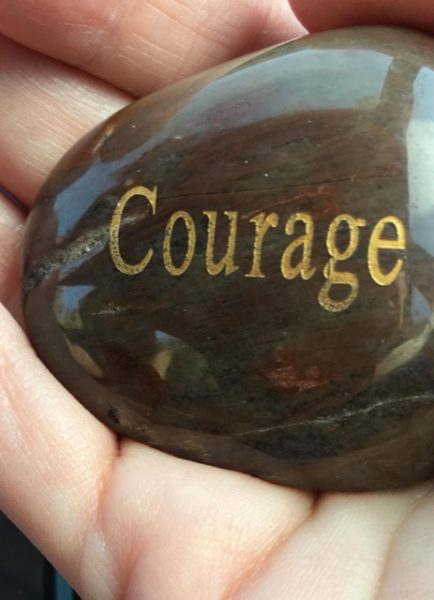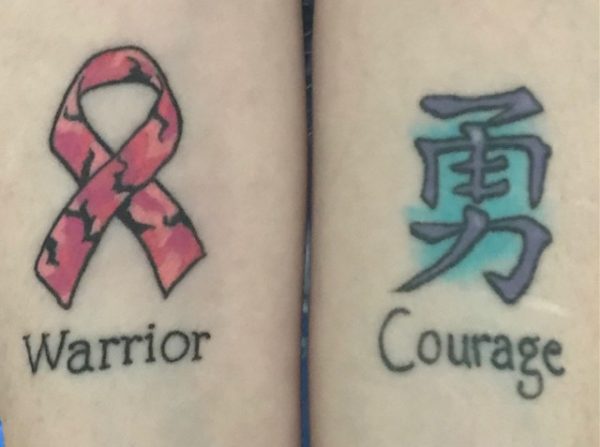How does a First responder release pressure from her work?

Jaime is a team player. It immediately shows in the way she dresses. I have seen her in her favorite sport team colors and numbers. I have seen her in her First Responders uniform, a solid navy blue, from its collar to the reinforced shoe. The dark, saturated dye is the complete opposite of her soft red hair and fresh, clear face. She exudes confidence, reliability, and safety.
However, Jaime’s life journey hasn’t taken the most straightforward route, and she has faced many challenges. I’ve always felt still waters run deep in her. She has met the bumps, delays, and U-turns in life with impressive natural resilience.
Jaime and her wife, Heather, are the first EMTs I’ve met. By their admission, Jaime is Eeyore in the Pooh Bear stories, and Heather is Tigger. Humor is strong between them as I follow their four talking cats on Instagram. I have enjoyed witnessing their intimate understanding of shared values and the importance of fun as a form of stress release for them both.
Unfortunately, Jaime had to step down from her active role in the field as a First Responder. Aggressive chemotherapy for breast cancer caused a fracture in her lower spine. She remains active in the community by training others, teaching CPR, and working as a dispatcher within the healthcare system. Sometimes it involves calling LIFESTAR, medical help by helicopter.
I ask her about the unique stress of being out in the field versus on the phone?
I will say the trauma can be worse on the phones. In the field, my eyes and ears can process what’s going on. Suppose a mother is panicking down the phone that their child is not breathing. In that case, all I can do is give her instructions, which is a form of action, but nothing like being physically there to do something about it.
Also, I can’t walk away from the desk to compose myself after a difficult call. If we are short-staffed I can’t take a second to regain myself. We have to keep going. It’s after the shift is over when things can get to me.
By this time, I think my job couldn’t be more opposite than Jaime’s. And how lucky I am. So I have to know, “What do you do to decompress once your shift is over?”
Sometimes I’d love to scream and release energy, but I think my neighbors would probably call the police! Driving in the car with loud music is one way I do that. It’s a top-to-bottom release, and, ultimately, my body relaxes, and I can feel a letting go. Music is huge for me.
I’m all for that. I have found singing loudly in the car, even raucously, with a favorite song, can create such an effective discharge of pent-up energy and feels very liberating. Throw in a scream or two, and it’s a home run.
Jaime continues, Something else that relaxes me is video gaming. It’s a great distraction forcing me to focus on what I’m doing in the present moment. After hurting my back, pain physically limits me. But gaming doesn’t cause a lot of pain. It helps me by re-focusing my mind. Like in EMS, you want to do the best for your patient; on a gaming team, you don’t want to let your team down.
I know nothing about video gaming, so Jaime recommended the Netflix documentary, Not a Game. It’s about the positive and innovative aspects of this fast-growing e-sport. Children and teenagers who are physically compromised and unable to participate in outdoor activities can excel in video games and feel an essential sense of connection with others that was missing before.
Jaime explains It’s a shame gaming has a negative stigma in society as people being lazy and avoiding reality. Better that than me yelling at my wife or my best friend. Sometimes it is just the time-out the body needs to alleviate stress.
Her hard-earned experience shows when she comments I’ve found it’s so much healthier over the years to learn to let the stress go. When I try to shove it down, it’s like sitting on a beach ball that’s underwater. It only stays that way for so long before the ball insists on bouncing back up. Stress is the same way. The more I try and hold it down, the more it wants to resurface in unhealthy habits.
As my last question, I inquire, “So what else in your experience of relaxation do you want to share?”
I’ve worked with therapists over the years on grounding and helping me to keep in the present when PTSD kicks in. Something in my hands helps. It redirects my mind by focusing on an object.
Jaime was given a lovely smooth stone with the word COURAGE carved into the surface. It was with her constantly during her chemo treatments and since then.
I describe to myself, what does the stone feel like? Is it cool, is it warm, is it smooth? What do the letters feel like under my fingers? This redirection can help bring me down from the stressor. It eventually translates into a relaxed state.
Jaime has subsequently given Courage stones to many others struggling, locally and as far as Australia.  She even got a Courage tattoo in Japanese lettering on her right forearm. On the inside of her left forearm is a pink camo ribbon declaring Warrior.
She even got a Courage tattoo in Japanese lettering on her right forearm. On the inside of her left forearm is a pink camo ribbon declaring Warrior.
She says It’s not the same as feeling the stone, but they’re a great visual reminder.
I salute Jaime for the challenges she has overcome and the service she provides to our community. She has helped expand my understanding of how the power of relaxation can come in many different shapes and forms.
I also appreciate and enjoy these two stones she gave me a few years ago –
